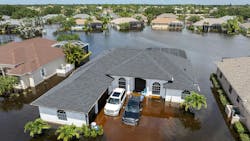FEMA announces funding opportunity for resilience projects
The Federal Emergency Management Agency (FEMA) announced the third funding opportunity on January 14, 2025, for the Safeguarding Tomorrow Revolving Loan Fund (RLF) grant program to make communities safer from natural hazards. This program, funded by the Bipartisan Infrastructure Law (BIL), provides capitalization grants to eligible applicants nationwide.
States, territories, eligible Tribal Nations and the District of Columbia are eligible for a total of $178 million, the largest amount available in a single fiscal year for the program. Funding enables these entities to administer revolving loan funds that will help local governments carry out hazard mitigation projects and build community climate resilience.
“Low-income communities are often the hardest hit in natural disasters,” said FEMA Administrator Deanne Criswell in a press release. “Thanks to the Bipartisan Infrastructure Law, increased funding will now be more accessible to communities to help strengthen their resiliency against intensifying climate threats.”
Current participants are using funding in diverse ways, from addressing earthquakes, heat, floods and several other hazards. FEMA also designed the program to assist residents of communities who are at increased risk to these hazards.
As part of President Joseph R. Biden, Jr.’s Investing in America agenda, states can direct loans to local governments through this program to mitigate the effects of events such as drought, intense heat, wildfires, floods and earthquakes. It is one of several Hazard Mitigation Assistance grant programs that fund improvements to make communities more resilient to natural hazards.
The Bipartisan Infrastructure Law provides $500 million to fund the Safeguarding Tomorrow Revolving Loan Fund Program through fiscal year 2026, providing low-interest loans to local governments to reduce their vulnerability to disasters, foster greater resilience and reduce disaster impacts.
Eligible projects include construction or modification of natural or built infrastructure to increase resilience, building code adoption and enforcement, local zoning, land use planning changes and developing local hazard mitigation plans. Deferred maintenance of mitigation infrastructure and paying the non-federal cost share of other FEMA hazard mitigation projects are also eligible.
